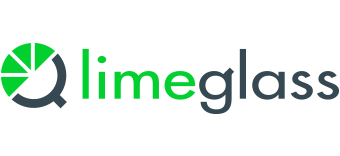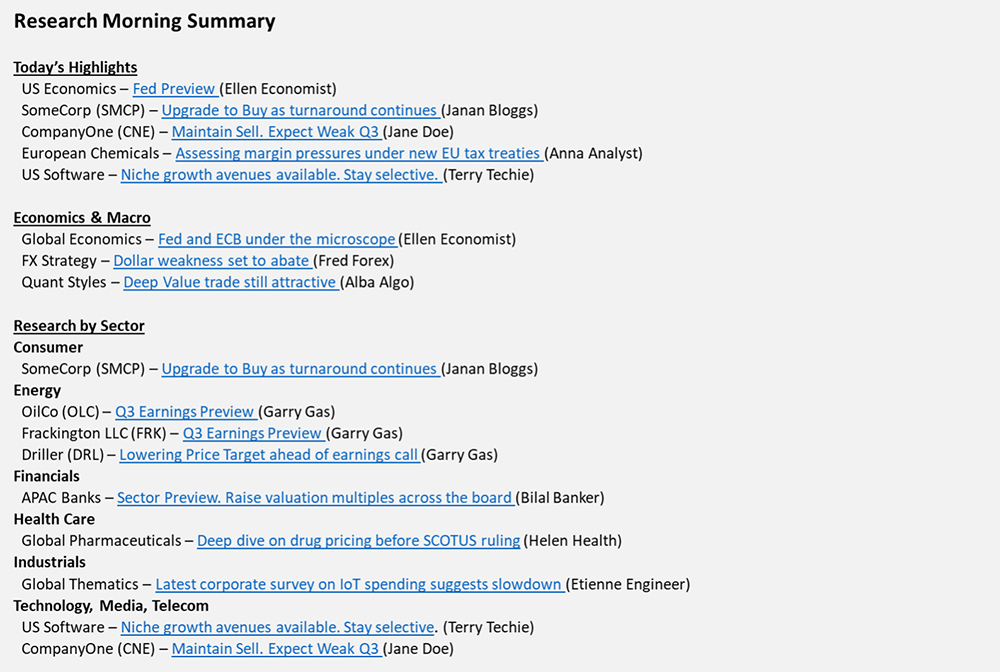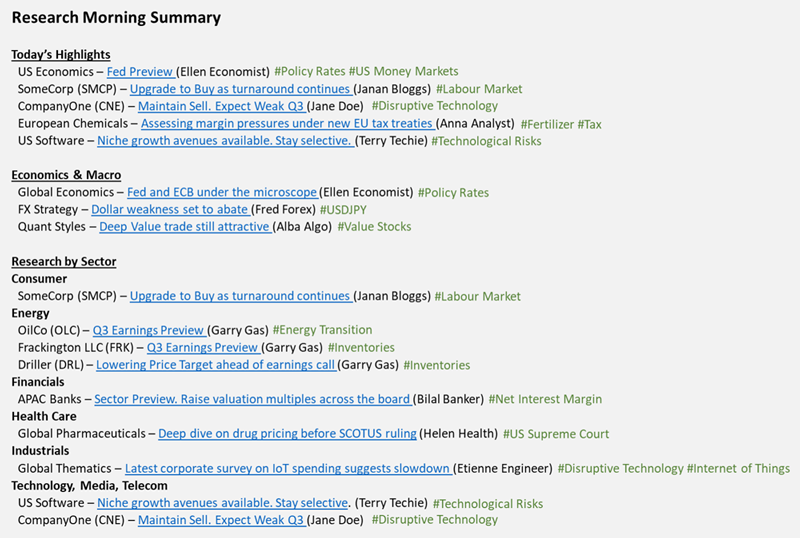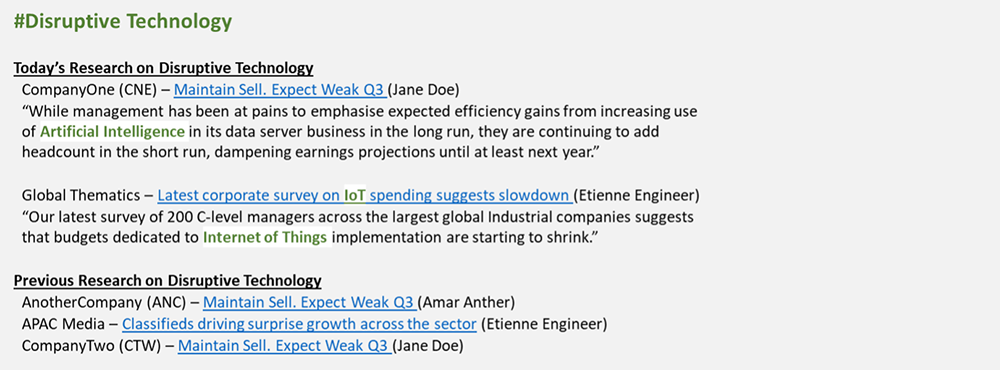Thematic Research Compilations
- Problem Solved: Sales and Research can only compile thematic summaries of content manually and if they know everything published in detail.
- Client Benefits: Automated compilation of documents according to themes.
- Ingestion & Atomisation
- Post-Publication
- Automatic Tagging
- Document Level Tags
- Output
- Client Type
- Sales
- Where does the Client use it?
- Smart Marketing
Compilation Emails are the unsung heroes of Research Distribution – we can make them even better!
Every Sell Side firm has a product (or many versions of a product) which, in its most basic version, is just an email with a long list of hyperlinks from which a recipient can click through to any of the day’s published research reports. This might be called a ‘Morning Email’, a ‘Morning Espresso’, a ‘Daily Research Highlights’ or any multitude of names, but it always performs a similar function.
The sheer volume of reports published by Sell Side Research departments every day dictates the need for this compilation email. Sales desks rely heavily on it so that they always know what Research has been published and can then repurpose the email for their own needs, moulding it into customised insights which can go to their clients.
The production value varies across firms. Some look like glossy marketing emails, while others are given a deliberately rough-and-ready feel and might be updated throughout the day. The method of compilation also varies. Some are produced with limited human interaction and use simple automation to choose the content and send them out. Others require a small, dedicated team pulling it together manually every morning before 6am, the human control allowing for total subjectivity when it comes to choosing particular documents to highlight or other information to add.
But what do they all have in common? The fact that they could do so much more if they had access to better tag data.
At the moment, the organisation of the Research and other information in these products is done according to the traditional tagging: Sectors, Analyst Names, and Regions tend to provide the main structure. But the true value of Research emerges when it cuts through those verticals. Themes or Topics or cross-Asset ideas are where the Research experts can make a real difference to their clients’ investment decisions when speaking to them 1×1, but there is currently no way for the written Research itself to be consumed that way.
Enter Limeglass.
Having tagged each document with its massive lexicon of financial terms, Limeglass can provide you with >10x more metadata on each document, allowing for those documents to be treated in any number of previously impossible ways.
Starting with the simplest first, just adding selected tags to a compilation product is one way that some Sell Side firms have gone to give Salespeople and Clients more useful information about which documents they should read.
In the example document second from the top, there is nothing in the traditional metadata for the document that would suggest that a reader interested in effects of a loosening labour market might have on equity valuations. But Limeglass is able to identify the #Labour Market topic being written about in the body of the document and then expose it as a tag.
In a more advanced version of this use case, it would be possible to make that tag clickable, so that a reader can use it to find more research on that theme. Taking another example, the third document about CompanyOne has a tag for #Disruptive Technology. Clicking on that tag could take the reader to a different view / section of the email which focussed on that theme:
Suddenly, the structure of how information is displayed on the page can be changed from the original ‘Highlights’ and ‘Sectors’ sections, and replaced with a focus on the Disruptive Technology theme, split between today’s research and older documents. That is just one example, of course.
Not only does this give you a whole different lens through which to view this report on CompanyOne, it could also be set up to show the specific paragraph(s) inside the document related to the theme. In the example above, a reference to ‘Artificial Intelligence’ is what flagged the document. In the next document down, it was ‘Internet of Things’.




